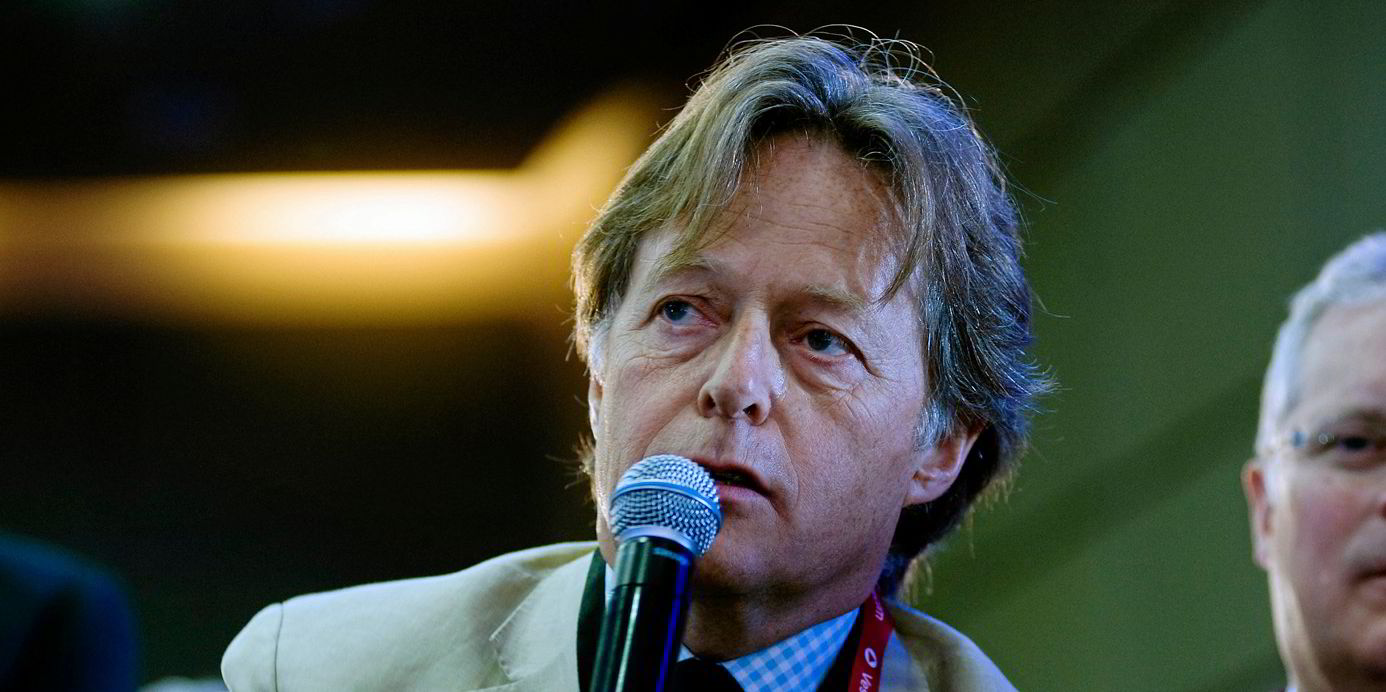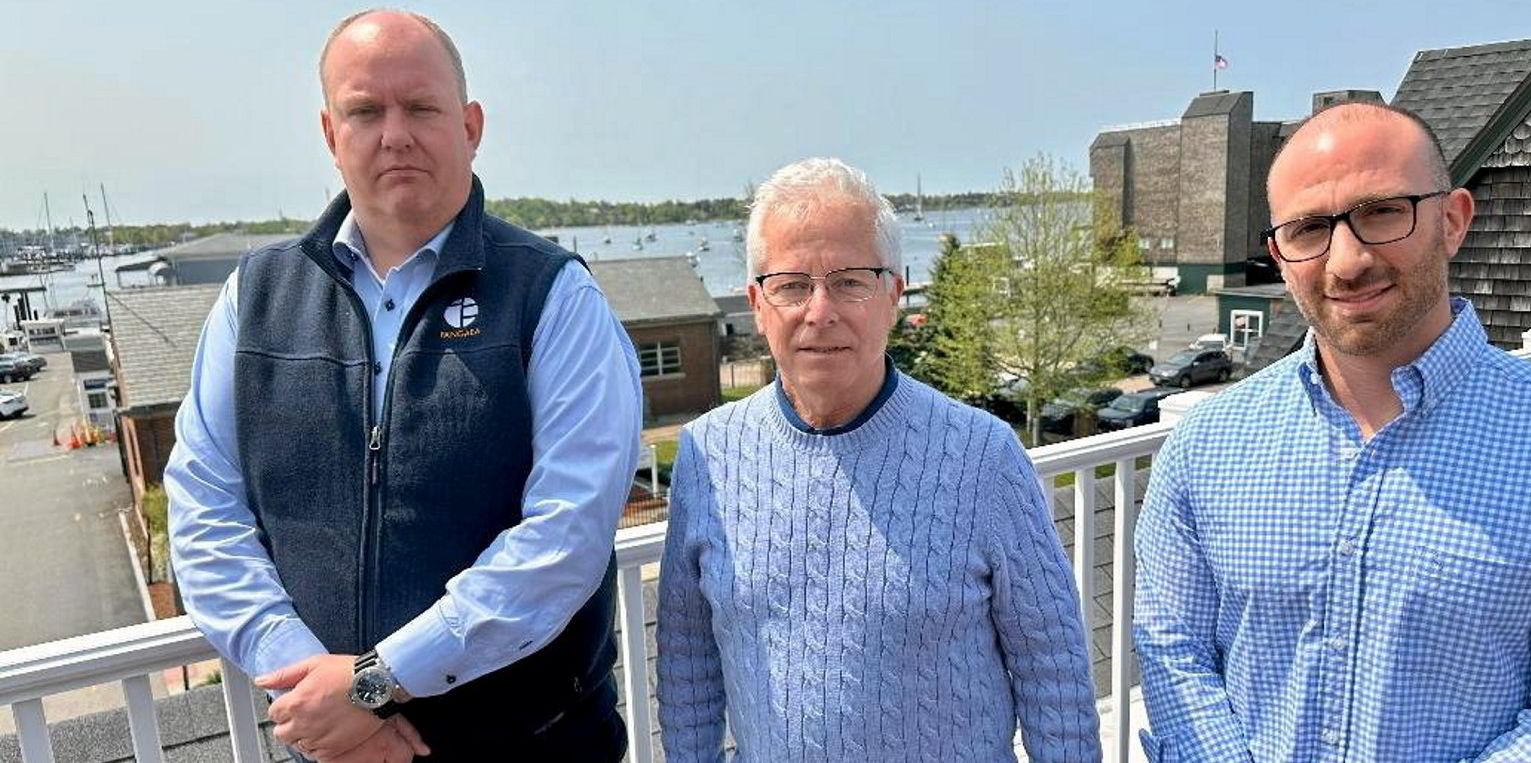Improving transparency is key to solving some of the most thorny problems affecting the freight derivatives marketplace, starting with the way freight is priced.
That is according to Philippe van den Abeele, freight futures trader and chief investment officer of Consortium Maritime Trading.
Van den Abeele also chairs the Independent Freight Forward Agreement Association steering committee, which met again last Wednesday.
He said the “burning issue” for association members and for freight market participants generally is the accuracy of the indices assessed and compiled by the Baltic Exchange, against which freight contracts are settled.
“Effectively, there is a general feeling that the way that the indices are produced can be dramatically improved,” he told TradeWinds.
“It’s an essential discussion that worries all the traders — that the index today doesn’t always represent accurately the way that they see the market being priced, and the problems related to that are potentially vast.”
Dynamic discussion
One example would be the disparity in pricing freight for vessels with or without scrubbers. The other impending issue is the inclusion of shipping in the European Union Emissions Trading System (EU ETS) in 2024, which van den Abeele said has not yet been priced into forward curves.
Discussion of these issues has to be more “dynamic”, starting with a dialogue with the Baltic.
“There is no confrontation here, it’s just that I think it’s a shame not to utilise this vast pool of people, who are trading on a daily basis, and not put their ideas on a piece of paper or a memorandum and then have a discussion with the relevant bodies involved,” he said.
Other parties such as the European Energy Exchange clearing house are already trying to address the potential impact that the EU ETS could have on freight markets.
“They’ve suggested a freight index including the carbon offsetting price,” van den Abeele said.
“There are other people looking at trying to produce a pricing [mechanism] or an index that incorporates the potential costs of any ship that comes into the EU ETS and has to pay effectively a carbon tax and integrate that in the cost of discharging cargoes in Europe, or going backwards and forwards between Europe and the world.”
Less than a year remains before shipping companies need to be ready for the new carbon regime. As a trader and principal, van den Abeele is not a shipowner but perceives worry among those who are.
“If they’re using freight derivatives to hedge some of the physical risks — which they do — it’s an element that causes another uncertainty in the quality of the hedge they’re putting on because that cost is not integrated into the actual settlement price of a futures contract or index,” he said.
Philippe van den Abeele describes the Independent Freight Forward Agreement Association (IFFAA) as “constructive … not confrontational”.
“The Baltic Council only represents a small fraction of the marketplace, whereas anyone involved with freight derivatives can apply to be part of IFFAA and go to the meetings and take part,” he explained.
“There is no point creating an association if you’ve only got 10 people there; you need to have sufficient weight or sufficient critical mass to be credible to be listened to by whoever you want to talk to.”
Members of the association’s steering committee include representatives from shipowners Torvald Klaveness, Oldendorff Carriers, DryLog and Star Bulk Carriers; commodities players Cargill, Koch Industries and RWE Supply & Trading; financial players the Paralos Fund, Consortium Maritime Trading and Profision Shipping Capital Management; and brokers Simpson Spence Young and Clarksons.
Forward freight agreement trading volumes and options have grown considerably over the past few years, which van den Abeele described as “very good news”.
“As the market grows, it should lower the cost of transactions, which is important for us because the clearing houses are getting more volume for their books and therefore can offer a more competitive clearing service,” he said.
“If you grow the market, it will also attract people outside of shipping, financials — all sorts of people who have lots of money and that are looking at our space.”
But is the market ready to handle a big influx of new capital? Van den Abeele is in discussions to grow his own fund by up to $30m. Other funds have hundreds of millions to potentially place in freight derivatives, but this could be tricky, given the underlying liquidity of the marketplace as it stands.
“They wouldn’t be able to place it, or if they were to place it, they would move the market unduly, which would ultimately not be very good for the marketplace, because then the inherent volatility of the contract becomes difficult to manage,” he said.
“It’s a very chicken-and-egg situation, but you need to understand that you can’t just get into a specialised, niche market with big sums of money and be able to place it, it just doesn’t work like that.”
He thinks the path to changing this situation goes back to the quality of the Baltic indices and finding ways to assess spot pricing of routes more accurately.
“General transparency of the marketplace has to improve — or can improve vastly. It’s the only way that you will bring outside liquidity or more existing liquidity into the marketplace.”
Chief investment officer Philippe van den Abeele currently has around $56m under management through Consortium Capital and Consortium Maritime Trading.
He founded Consortium in 2013 with Patrick Burke, who is the group's head of operations.
"We are in discussions with three different groups to raise an additional $25m to $30m," van den Abeele told TradeWinds.
Talks are advancing and due-diligence processes are underway, he added.
"At this stage, I would say that about 80% of our investors — or shareholders, because we have two distinct companies — are from shipping backgrounds or involved in shipping, and then 20% is what I call commodity-related but non-shipping investors," he said.
The proportion of non-shipping investors will grow even higher if the new round of fundraising is completed as hoped, he added.
"We're getting definite interest from people who are not in shipping, but we are getting the same sort of questions — 'Why isn't there a centralised screen? We have heard that the indices or the pricing is not always as transparent as it could be'," he said.
"They've got their questions, they've got their red flag or their box that needs to be ticked."
Van den Abeele said this influx of non-shipping capital into freight derivatives comes from shortcomings in more mainstream markets.
"The reason why these people are coming in is that they are looking desperately at what I call diversification investments through specialised CTAs or commodity trading advisors, matching to niche or specialised markets, because they are struggling to create value or returns for their investors in what I would describe as the more traditional markets."
As the head of a $56m investment management business, it has been a pleasantly surprising — perhaps even pleasantly shocking — experience, having discussions with would-be investors with assets under management worth trillions. Van den Abeele said he couldn't help but ask a fund manager why he had stepped into his office.
"I find it fascinating. The guy looked at me and I said: 'God, this is a strange way of starting a discussion'. He said: 'Put yourself in my shoes!'"




